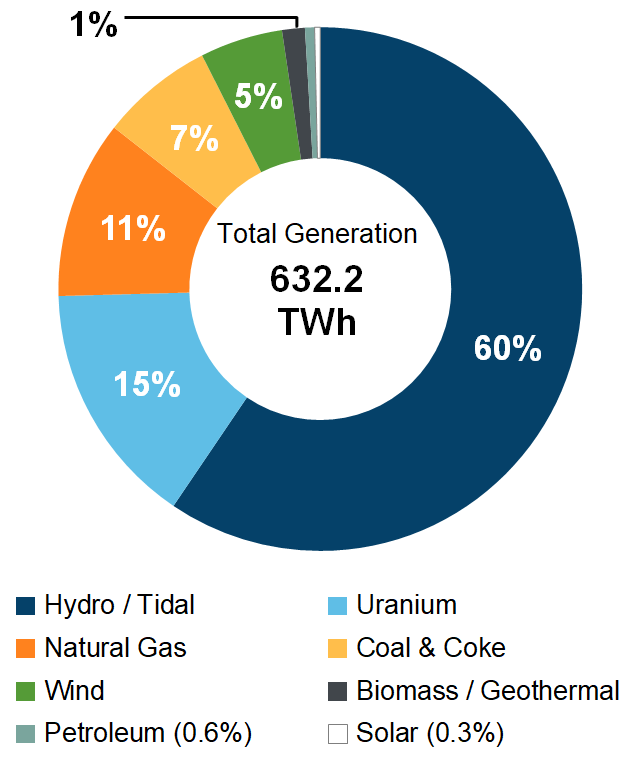The Holy Grail
"A man was drowning and asked God to help him. A boat came bye wanting to help, the man refused. When he died and got to heaven he ask God why he didnt save. God said you didn't see the boat." A joke
On December 20, 1951, “a day that would go down in infamy”,1 the generation of electricity from nuclear was achieved. 100kw was produce from the EBR-I experimental station near Arco, Idaho, enough too power four light bulbs.2
How a War, Energy crisis, and a canal helped the Nuclear industry build out
The Suez Canal, complete during 1856, is one of the most important bodies of water in global trade. The 120-mile waterway contects European and Asain trade. Trade time between these two continents was cut down significantly. What normal would be a three week journey around the Cape of Good Hope was cut down to roughly 9 days. It goes without saying, access to this piece of real estate is vital. Financial trouble forced the Ottoman Governer of Egypt to sell the canal to the British. Its survived two World Wars but was nationalize by the Egyptain President Gamal Abdel Nasser in 1956. This provocation, along with Egypt blocking Israel access to the Straits of Tiran,
was the genesis of the Second Arab–Israeli war. The second major shock took place during the 1973 when OPEC place an oil embargo on supporters of Israel in the Yom Kippur War. A fundamental shift occured at this time for the United States which had oil burning power plants.
While the build out of the of nuclear happened to co-inside with the energy crisis of the 1970s it was not the only reason. The United States, while a large oil producer at the time, began to experience field declines.
An all above energy approach
Feeling assault on multiple fronts—high energy cost, inflation, high unemployment, trade deficits because of imported oil, and feild declines helped by Carter's windfall tax—sounds familiar, Mr. Carter implement a series of energy initiatives to try to stem the bleeding. Some of the less known programs/policy/regulations range from solar panles on the roof top of the White House, to tax on inefficient vehicles, price control on gasoline-tax on stand by well heads, power share agreements between utilities for underutilized plants, etc.
Passed energy policy of some decontrol & some regulation
The total energy package pushed by Carter in 1978 was extremely complicated, but far-reaching in its beneficial effect on our nation. The production of gas-guzzling automobiles would be deterred by heavy penalties; electric utility companies could no longer encourage waste of energy with their distorted rate structures and would have to join in a common effort to better insulate buildings; higher efficiency of home appliances would be required; gasohol production and carpooling were promoted with tax incentives; coal production & use were stimulated, along with the use of pollution-control devices; and the carefully phased decontrol of natural -gas prices would bring predictability to the market, increase exploration for new supplies, & reduce waste of this clean-burning fuel. The new bills also included strong encouragement for solar-power development, and tax incentives for the installation of solar units in homes and other buildings. These and many more provisions now became the law of the land. Source: Keeping Faith, by Jimmy Carter, p.107 , Oct 15, 1978
Stumbling on the right answer
To much chagrin of the political left and “greens” the United States, with 92 reactors producing 771,638 GWh of nuclear electricity in 2021, is the largest producer of nuclear power followed by followed by China with 383,205 GWh.
Nuclear not only provides 20% of America baseload power-which is what matters, 24 hour power-and 52% of our carbon free electricity!
With all the hysteria of “climate change"- just a side tangent, climate also changes-and the rush to lower emissions, one would think that nuclear would be a no brainer. We have a proven technology that can deliver carbon free, base load electricity, yet politicians and the “environmental-industrail complex” are hell bent on not to exploit this bounty.
How Canada became the France of North America
Canada does not come to mind when you hear nuclear.
At 15% vs America 20%, its seems poultry. However, digging into the numbers brings a difference picture to light. With 38% of the population and also the economic engine of the country, nuclear provides 61.2% of the province electricity. All currently operating Canadian nuclear reactors, 19, are a type of pressurized heavy-water reactor (PHWR) of domestic design, the CANDU reactor.
Ontario was the first jurisdiction in North America to end coal power, representing the single largest GHG emissions reduction action in North America.4 Existing and new-build nuclear played a critical role in facilitating this phaseout.
Coal-fired electricity was replaced by a mix of baseload, intermittent and peaking capacity and a strong conservation and demand management approach. In the end, Ontario added a total of 1,500 MW of nuclear, 5,500 MW of natural gas and 5,500 MW of non-hydro renewables.
ELIMINATING COAL-FIRED ELECTRICITY IN ONTARIO5
2001: Ontario has five coal-fired generating stations, comprising 19 units totaling ~8,800 MW
2003: Coal represents approximately 25%, or 7,560 MW, of Ontario's supply mix
2003: Ontario commits to phase out coal-fired electricity entirely
2012: Two nuclear power units are refurbished and returned to service
2014: Coal’s share of Ontario’s power supply reaches 0%
Today: Nuclear power now generates 60% of Ontario’s power
With proper and thoughtful regulations, the Canadian government accomplished several objects. Cleaner air, energy security, new export markets, and jobs.
Canada is the world's largest exporter of uranium, and has the world's second largest proven reserves. Canada also exports nuclear technology within the terms of the Nuclear Non-proliferation Treaty, to which it is a signatory, and is the world's largest producer of radioactive medical isotopes.3
Canada is as closely vertical integrated as it can get.
The War Like Effort For Nuclear
It is fair to say that most people do not know who Admiral Hyman G. Rickover was. The "Father of the Nuclear Navy," as he became to be known and his influence on the Navy necular program for its warships makes him me one of the Navy's most important officers. Although he never served in combat, he realized the security risk the United States military would face in the future in world of rising tension and oil prices. At the time the American Navy fleet ran on oil. Admiral Hyman saw the future and it was nuclear.
The United States Navy has 11 large nuclear-powered fleet carriers—carrying around 80 fighters each—the largest carriers in the world; the total combined deck space is over twice that of all other nations combined.4
It’s also doesn't hurt that the Navy also has 66 nuclear submarines as well. With this simple, but technically challenging, move of witching fuels sources, Admiral Hyman G. Rickover gave the American Empire a huge advantage when it came to global trade and military projection. Is easy to underestimate how revolutionary of this was. Akin to the switch from coal to oil that Winston Chruchill made during WW2 for the British Naval fleet and help secure victory for the British. For comparison: If you were to run each type of aircraft carrier with 200,000 horsepower, non-stop for one-week, a conventional carrier (HMS Queen Elizabeth) would require over 5 million liters (1,30,000 gallons) of diesel fuel. When you consider that the US military uses roughly 269,230 barrels of oil a day and emitted more than 25,000 of CO2, you start to appericate the financial and “environmental” contribution Admiral Hyman G. Rickover has made to our country. He essentially made S.M.R a functioning technology!
Side tangent here—America could have send it's 66 S.M.R to Europe right now to assist them with their energy crisis if we wanted to. I guess Ron Emanuel wisdom: never let a good crisis go to waste, is staple in D.C.
Why I remain a Nuclear Bull and what I am investing in
My bullishness on this sector comes down to basic arithmetic. The world governments are demanding lower emissions energy and it can only be
Keep reading with a 7-day free trial
Subscribe to The Monetary Skeptic to keep reading this post and get 7 days of free access to the full post archives.







